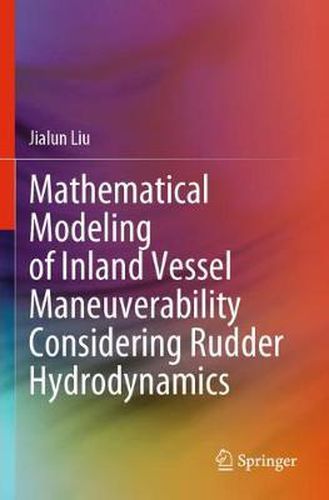Readings Newsletter
Become a Readings Member to make your shopping experience even easier.
Sign in or sign up for free!
You’re not far away from qualifying for FREE standard shipping within Australia
You’ve qualified for FREE standard shipping within Australia
The cart is loading…






This title is printed to order. This book may have been self-published. If so, we cannot guarantee the quality of the content. In the main most books will have gone through the editing process however some may not. We therefore suggest that you be aware of this before ordering this book. If in doubt check either the author or publisher’s details as we are unable to accept any returns unless they are faulty. Please contact us if you have any questions.
This book demonstrates that different rudder configurations have different hydrodynamic characteristics, which are influenced by the profile, the parameters, and the specific configuration. The author proposes new regression formulas to help naval architects quickly estimate the rudder-induced forces and moments in maneuvering. Furthermore, the author proposes and validates an integrated maneuvering model for both seagoing ships and inland vessels. Using the proposed regression formulas and maneuvering model, the specific impacts of rudder configurations on inland vessel maneuverability are studied. In turn, the book demonstrates the application of Reynolds-Averaged Navier-Stokes (RANS) simulations to obtain rudder hydrodynamic characteristics, and the integration of the RANS results into maneuvering models as an accurate estimation of rudder forces and moments needed to quantify the impacts of rudder configurations on ships’ maneuvering performance. In addition, the author proposes new criteria for the prediction and evaluation of inland vessel maneuverability. Simulations of ships with various rudder configurations are presented, in order to analyze the impacts of rudder configurations on ship maneuverability in different classic and proposed test maneuvers. Offering essential guidance on the effects of rudders for inland vessel maneuverability, and helping practical engineers make informed design choices, the book is of interest to researchers and academics in the field of naval engineering, as well as students of naval architecture. Industrial practitioners working on ship design may also find it beneficial.
$9.00 standard shipping within Australia
FREE standard shipping within Australia for orders over $100.00
Express & International shipping calculated at checkout
This title is printed to order. This book may have been self-published. If so, we cannot guarantee the quality of the content. In the main most books will have gone through the editing process however some may not. We therefore suggest that you be aware of this before ordering this book. If in doubt check either the author or publisher’s details as we are unable to accept any returns unless they are faulty. Please contact us if you have any questions.
This book demonstrates that different rudder configurations have different hydrodynamic characteristics, which are influenced by the profile, the parameters, and the specific configuration. The author proposes new regression formulas to help naval architects quickly estimate the rudder-induced forces and moments in maneuvering. Furthermore, the author proposes and validates an integrated maneuvering model for both seagoing ships and inland vessels. Using the proposed regression formulas and maneuvering model, the specific impacts of rudder configurations on inland vessel maneuverability are studied. In turn, the book demonstrates the application of Reynolds-Averaged Navier-Stokes (RANS) simulations to obtain rudder hydrodynamic characteristics, and the integration of the RANS results into maneuvering models as an accurate estimation of rudder forces and moments needed to quantify the impacts of rudder configurations on ships’ maneuvering performance. In addition, the author proposes new criteria for the prediction and evaluation of inland vessel maneuverability. Simulations of ships with various rudder configurations are presented, in order to analyze the impacts of rudder configurations on ship maneuverability in different classic and proposed test maneuvers. Offering essential guidance on the effects of rudders for inland vessel maneuverability, and helping practical engineers make informed design choices, the book is of interest to researchers and academics in the field of naval engineering, as well as students of naval architecture. Industrial practitioners working on ship design may also find it beneficial.